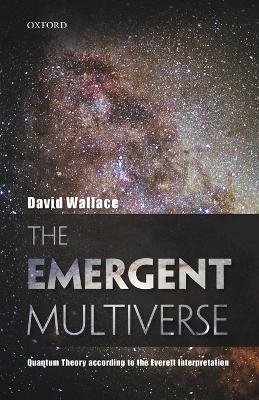
The Emergent Multiverse
Oxford University Press (Verlag)
978-0-19-870754-7 (ISBN)
The Emergent Multiverse presents a striking new account of the 'many worlds' approach to quantum theory. The point of science, it is generally accepted, is to tell us how the world works and what it is like. But quantum theory seems to fail to do this: taken literally as a theory of the world, it seems to make crazy claims: particles are in two places at once; cats are alive and dead at the same time. So physicists and philosophers have often been led either to give up on the idea that quantum theory describes reality, or to modify or augment the theory.
The Everett interpretation of quantum mechanics takes the apparent craziness seriously, and asks, 'what would it be like if particles really were in two places at once, if cats really were alive and dead at the same time'? The answer, it turns out, is that if the world were like that--if it were as quantum theory claims--it would be a world that, at the macroscopic level, was constantly branching into copies--hence the more sensationalist name for the Everett interpretation, the 'many worlds theory'. But really, the interpretation is not sensationalist at all: it simply takes quantum theory seriously, literally, as a description of the world. Once dismissed as absurd, it is now accepted by many physicists as the best way to make coherent sense of quantum theory.
David Wallace offers a clear and up-to-date survey of work on the Everett interpretation in physics and in philosophy of science, and at the same time provides a self-contained and thoroughly modern account of it--an account which is accessible to readers who have previously studied quantum theory at undergraduate level, and which will shape the future direction of research by leading experts in the field.
David Wallace was born in San Rafael, California, in 1976, but has been resident in the UK since 1977. He studied theoretical physics at Oxford University from 1994-2002, but upon realising his research interests lay mostly in conceptual and foundational aspects of physics, he moved across into philosophy of physics. For the last six years he has been Tutorial Fellow in Philosophy of Science at Balliol College, Oxford. He holds PhDs in physics and in philosophy, and his research interests span a wide range of issues on the boundary between philosophy and physics: symmetry and the gauge principle, the direction of time, the structure of quantum field theory, and of course the interpretation of quantum mechanics.
PART I: THE PLURALITY OF WORLDS; PART II: PROBABILITY IN A BRANCHING UNIVERSE; PART III: QUANTUM MECHANICS, EVERETT STYLE; APPENDICES
| Erscheint lt. Verlag | 15.5.2014 |
|---|---|
| Verlagsort | Oxford |
| Sprache | englisch |
| Maße | 143 x 216 mm |
| Gewicht | 604 g |
| Themenwelt | Geisteswissenschaften ► Philosophie ► Erkenntnistheorie / Wissenschaftstheorie |
| Geisteswissenschaften ► Philosophie ► Metaphysik / Ontologie | |
| Naturwissenschaften ► Physik / Astronomie ► Quantenphysik | |
| ISBN-10 | 0-19-870754-1 / 0198707541 |
| ISBN-13 | 978-0-19-870754-7 / 9780198707547 |
| Zustand | Neuware |
| Informationen gemäß Produktsicherheitsverordnung (GPSR) | |
| Haben Sie eine Frage zum Produkt? |
aus dem Bereich

![Was heißt Denken?. Vorlesung Wintersemester 1951/52. [Was bedeutet das alles?] - Martin Heidegger](/media/113619842)
